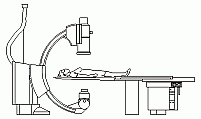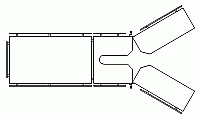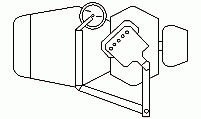CAD Blocks categories
 3D models
3D models home furniture
home furniture sanitary ware - bathrooms
sanitary ware - bathrooms professional equipment
professional equipment doors and windows
doors and windows people and animals
people and animals plants and trees
plants and trees vehicles - transports
vehicles - transports architectural details
architectural details mechanical - electrical
mechanical - electrical urban planning - civil works
urban planning - civil works safety health construction
safety health construction accessible design
accessible design drawing sheet
drawing sheet signals
signals construction machinery
construction machinery accessories and objects
accessories and objects maps and street maps
maps and street maps
Free CAD Blocks: Hospital Equipment for Healthcare Facilities
consists of: CT scanner, surgery chair, operating chair, intensive care bed, critical care bed, hospital gurney, medical stretcher, patient transport stretcher, medical stretcher, surgery table, operating room table, surgical platform, operation table, gynecological chair, exam chair, birthing bed, delivery bed, maternity table, birth table.in plan, elevation and lateral view 2 dimensions representations for AutoCAD drawings.
Why the Right Clinic and Hospital Equipment is Crucial
Selecting the appropriate clinic and hospital equipment is essential for ensuring that medical facilities, from small clinics to large hospitals, can provide high-quality patient care. Equipment such as CT scanners, surgical chairs, and ICU beds play vital roles in daily healthcare operations. Well-maintained and reliable medical equipment not only improves patient safety but also ensures smooth workflows for healthcare professionals. Investing in durable and advanced healthcare equipment leads to better treatment outcomes and overall facility efficiency.
Types of Essential Equipment for Clinics and Hospitals
A wide variety of equipment is essential for the efficient operation of healthcare facilities. Commonly used equipment includes the CT scanner, a critical tool for diagnostic imaging, and the surgical chair, which provides ergonomic support for surgeons during procedures. Additionally, ICU beds and hospital stretchers are fundamental for patient care, especially in emergency and critical care settings. Other key pieces of equipment, such as surgical tables, gynecological chairs, and delivery tables, are crucial for specific medical specialties. Each of these items contributes to the overall functionality and effectiveness of a medical facility.
Common Dimensions of Medical Equipment for Hospitals
Understanding the dimensions of the equipment is crucial when planning the layout of a healthcare facility. For instance, a typical ICU bed measures around 36 inches wide by 84 inches long (0.91 by 2.13 meters), allowing for sufficient space for both patient care and medical staff access. A standard hospital stretcher usually measures 24 inches wide by 76 inches long (0.61 by 1.93 meters), ensuring it fits easily through doorways and hallways. Surgical tables are typically around 30 inches wide by 72 inches long (0.76 by 1.83 meters), offering enough surface area for various procedures. Knowing these dimensions helps designers optimize space for safety and efficiency.
Designing Healthcare Facilities with CAD Blocks
Incorporating CAD blocks into healthcare facility designs allows for precise planning and visualization. Our collection includes free CAD blocks for essential equipment such as CT scanners, surgical chairs, hospital stretchers, and surgical tables. These blocks, available in .dwg format, help architects and designers accurately scale and place equipment within the layout. By using CAD blocks, you can save time and ensure that the space is utilized effectively, enhancing both workflow and patient care.
Benefits of High-Quality Medical Equipment in Healthcare Settings
High-quality clinic and hospital equipment is crucial for maintaining a functional and efficient healthcare facility. From advanced CT scanners that provide critical diagnostic information to durable ICU beds that support long-term patient care, investing in reliable equipment improves overall patient outcomes. Well-designed surgical tables and gynecological chairs ensure that procedures are carried out smoothly and safely. By using premium medical-grade materials, healthcare providers can reduce maintenance needs and extend the lifespan of their equipment, ultimately enhancing the quality of care provided.




















